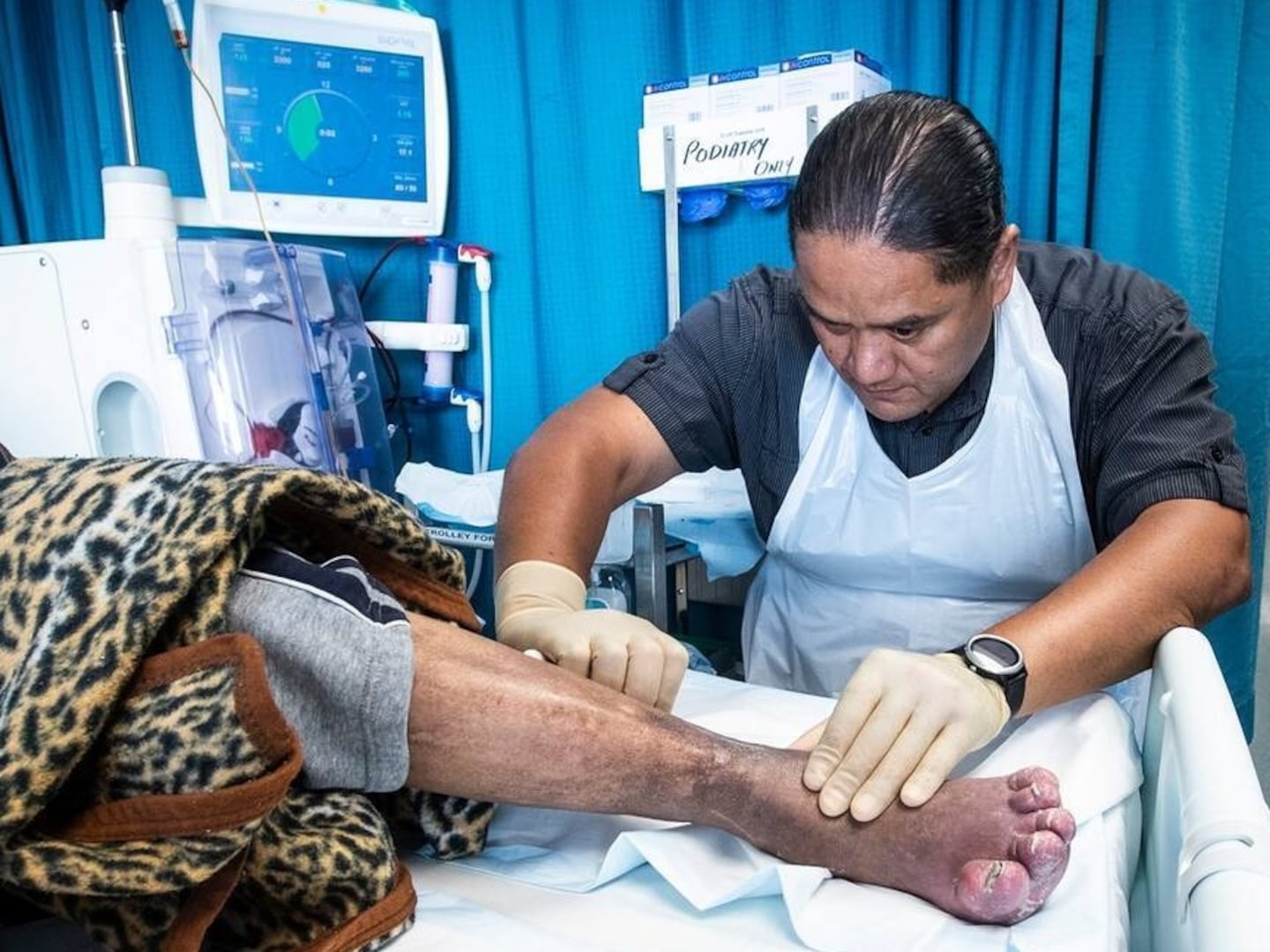Māori and Pasifika have undergone diabetes-related amputations a decade earlier than other groups in the northern region, a newly published study in the NZ Medical Journal has revealed.
The audit of cases across Northland, Auckland, Waitematā and Counties Manukau DHB areas between 2013 and 2016 has found that diabetes-related lower extremity (limb) amputations (DRLEA) were more common for Māori and Pacific peoples, and people living in higher deprivation.
Overall, the study observed that three times more men than women from all groups across the region had undergone DRLEA.
The observational study by Te Whatu Ora podiatrist Michele Garrett and public health physician Sarah Gray, Audit of diabetes-related lower extremity amputations in the Northern Region of New Zealand 2013–2016, published in the July issue of the journal, looked at amputations among those 35 years and older living with diabetes in the region.
A notable finding was that Pacific people and Māori were a decade younger (mean age 59.9 and 60 years respectively) than the rest of the population (mean age 69.7 years) when they underwent DRLEA.
Between July 2013 and June 2016, the audit found that 155 Māori were admitted to hospital for diabetes-related lower limb amputations, equivalent to 24.4% of the region’s 635 total DRLEA-related admissions.
For Pasifika, the number was 151, or 23.8% of admissions.
The study found that amputations were “notably higher” for people living in the most deprived areas in the region - defined as “quintile 5″ using the New Zealand Index of Deprivation 2013 quintile index. They were “almost equal” to the total numbers in the other four quintiles combined (ie. 311 people living in quintile 5 areas underwent DRLEA, compared to 319 for the other quintiles combined).
Overall, 460 males (72.4%) and 175 females (27.6%) were admitted to hospitals in the region for DRLEA-reasons.
Across the three-year period, 863 amputations were performed on 488 people, with 75% listed as “minor”. Twenty-two percent of people experienced more than one admission.
“Males, Māori and Pacific people faced elevated admission rates for DRLEA,” the study said.
“High numbers of DRLEA were observed with higher levels of deprivation. Furthermore, Māori and Pacific populations underwent amputations approximately a decade earlier than other groups.”
While difficult to identify a primary cause for DRLEA, the study said common precursors to amputation were foot ulcers, skin infection, ischaemia (inadequate blood supply) and osteomyelitis (bone tissue inflammation).
The study suggests timely intervention to ensure people receive specialist podiatry care when foot complications first appear could avoid diabetes foot ulcers (DFU) leading to DRLEA.
“Findings from this study indicate that people with diabetes-related foot complications may not be receiving timely access to specialist podiatry services, with only 35% of admissions being seen prior to first DRLEA admission,” it said.
“With timely access to diabetes foot protection services and rapid referral of DFU to specialist foot services, encouragingly, many DFU and their potential sequalae can be avoided.”




